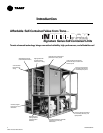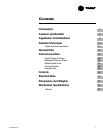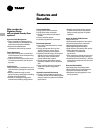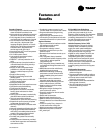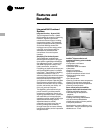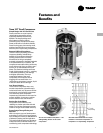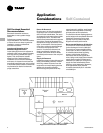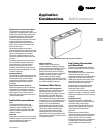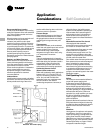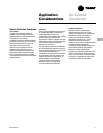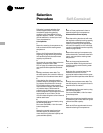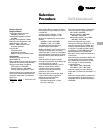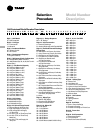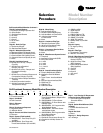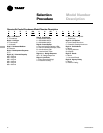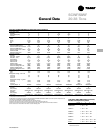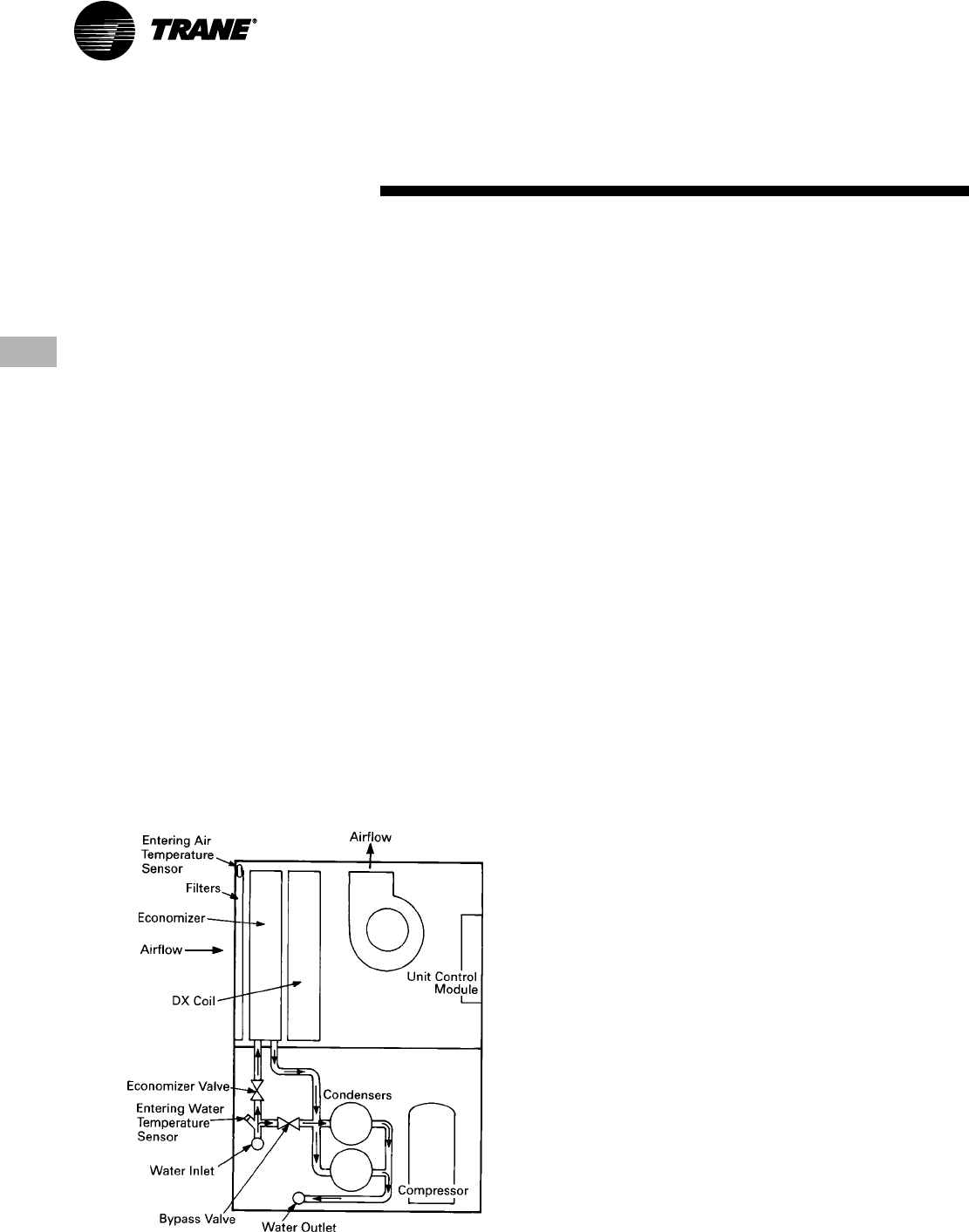
Application
Considerations
PKG-PRC002-EN10
Self-Contained
Recommended Pump Location
Locate pump downstream of the cooling
tower and upstream of the self-contained
unit. This provides smoother and more
stable unit operation.
When the tower and pump are both roof
mounted, be sure to provide the
necessary net positive suction head
pressure to prevent cavitation. Raise the
tower or submerge the pump in a sump
to provide positive suction. To prevent an
on-line pump failure, use a standby pump
to avoid a complete system shutdown.
Several partial capacity pumps or
variable speed pumps may be used.
Review the economics of these alternate
pumping options.
Strainers and Water Treatment
Water strainers are required at the unit
inlet to eliminate potential unit damage
from dirty water. Specify a water basket-
type strainer to avoid an incorrect
stream strainer application. Untreated or
poorly treated water may result in
equipment damage. Consult a water
treatment specialist for treatment
recommendations.
Isolation Valves
Install isolation valves at each unit before
the strainer and after the condenser. This
allows periodic servicing of the unit or
strainer while allowing other units in the
system to remain in operation.
Pressure Gauges
Install pressure gauges on the inlet and
outlet of the self-contained unit. Select
the gauge’s scale so that the unit design
operating point is approximately mid-
scale.
Thermometers
Install thermometers on the condenser
water inlet and outlet lines to each unit for
system analysis. Trane Company
recommends using a thermometer
temperature range of 40 to 140 F, using
a 2 F temperature increment.
Drains
The unit condensate drain is internally
trapped to offset the pressure differential
that exists during fan operation. Install a
trapped drain in the low point of the
mechanical equipment room floor to
collect water from cleaning operations.
Condensing Pressure Control
(Water-Cooled condensers)
Often cold condensing water applications
between 35 F (1.7 C) and 54 F (12.2 C)
require a condensing pressure control
valve. Any unit with variable-flow
waterside valves can modulate water
flow to maintain a user defined
condensing temperature. However, to
utilize this feature, the building water
system must be capable of operating at
reduced water flow rates through the
self-contained units. It is imperative to
install variable volume pumps or an
external bypass in the water distribution
system.
Waterside Economizer Flow Control
Units equipped with waterside
economizer control valves can be set up
for variable or constant water flow.
Use constant water flow
setup on water
systems that are not capable of
unloading water supply to the unit. The
economizer and condenser valves will
operate in complement to one another to
provide continuous water flow.
Use variable water flow
setup with water
flow systems that can take advantage of
pump unloading for energy savings.
Since non-cooling operation restricts
water flow during part load economizing
or condensing temperature control, it is
imperative to install variable volume
pumps or an external bypass in the water
distribution system.
Unit Operating Limits
Airflow
The minimum recommended airflow for
proper VAV system staging and
temperature control is 35 percent of
nominal design airflow. Adjusting VAV
boxes with the appropriate minimum
settings will prevent the self-contained
unit from operating in a surge condition at
airflows below this point. Continuous
operation in a surge condition can cause
fan failure. Reference General Data
Tables on pages 17-20 for minimum
airflow conditions.
Signature Series self-contained units use
fixed pitch sheaves. Adjust air balancing
by obtaining alternate fixed pitch sheave
selections from the local Trane sales
office.
Waterflow
Use 3 gpm/ton for optimum unit capacity
and efficiency. Use 2.5 or 2 gpm/ton to
reduce pump energy, cooling tower and
piping costs. However, these reduced
waterflows may impact unit capacity and
efficiency by one or two percent. Consult
General Data Tables on pages 17-20 for
unit specific waterflow ranges.
Waterside Economizer Piping



